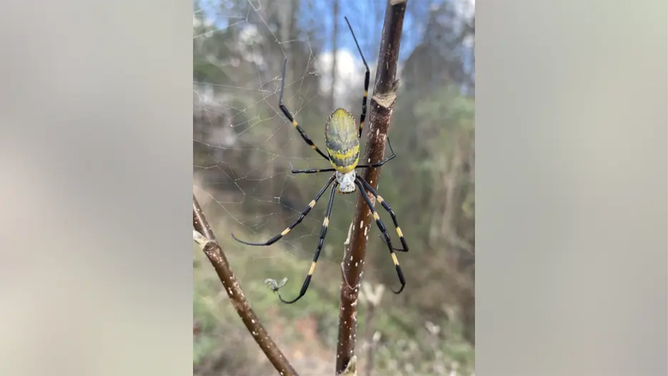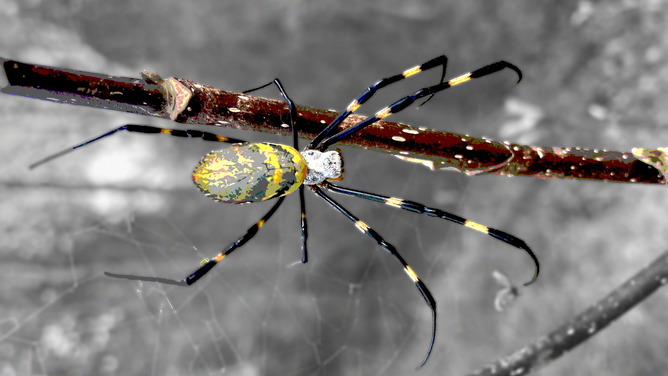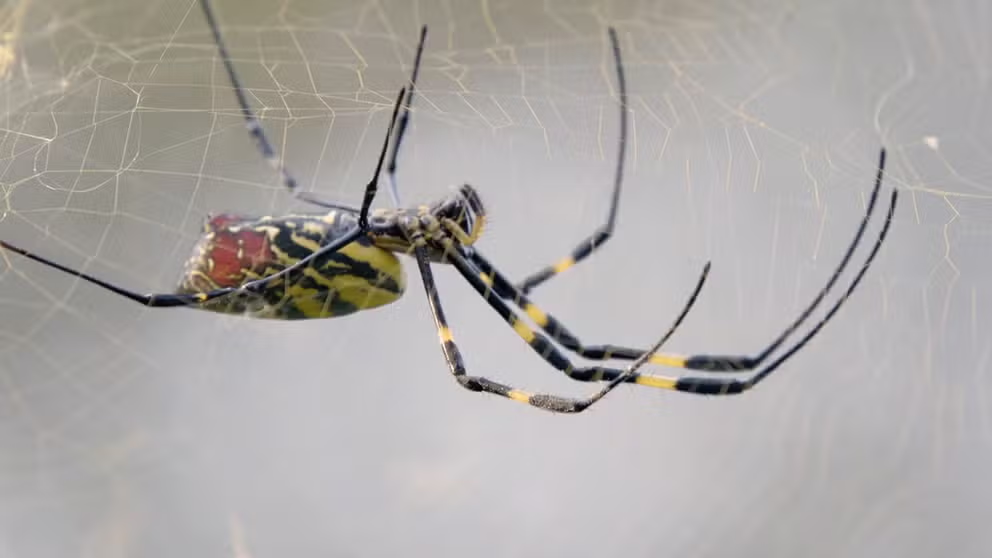Parachuting Joro spiders expected to spread across Florida, Southeast
The Joro spider’s golden web has been spotted in Georgia and South Carolina. Entomologists suggest it could spread even farther than that.
East Asian Joro spider likely to spread beyond Georgia
Joro spiders can survive better in a brief freeze, suggesting they can exist in a colder climatic region than the Southeast. (Video from December 2022)
ORLANDO, Fla. - A large spider native to East Asia is expected to spread throughout the Southeast, including Florida, according to a study from Clemson University.
According to FOX 35 Orlando, the Joro spider’s golden web has already been spotted in Georgia and South Carolina. Entomologists suggest it could spread even farther than that. The Joro appears better suited to colder temperatures than a related species. It has about double the metabolism, a 77% higher heart rate, and can survive a brief freeze that kills off its relatives, researchers say.
PARACHUTING, PALM-SIZED SPIDERS, AIDED BY COLD TEMPS, LIKELY TO INVADE EAST COAST
"This spider is going to be able to inhabit most of the eastern U.S.," said David Coyle, a scientist and assistant professor in the Department of Forestry and Environmental Conservation at Clemson University. "It shows that their comfort area in their native range matches up very well with much of North America."
What is a Joro spider?
The Joro — Trichonephila clavata — is part of a group of spiders known as orb weavers for their highly organized, wheel-shaped webs. Joro females have colorful yellow, blue, and red markings on their bodies and can measure 3 inches across when their legs are fully extended.
Are Joro spiders venomous?

A Joro spider is seen in its web.
(David Coyle/Clemson University / FOX 35 Orlando)
Joro spiders are venomous and considered extremely invasive, but researchers say they rarely bite humans or pets and their fangs can't penetrate the skin.
How dangerous are Joro spiders to the environment?
It’s not clear exactly how and when the first Joro spider arrived in the U.S. Their impact on native species and the environment is also not clear, though some researchers believe they are benign. Researchers say while the spiders are good at catching nuisance insects such as mosquitos and flies, they also push out other spiders.
"These are not just benign spiders coming to catch and kill bad things; these are pushing out native species and catching and killing whatever happens to get in their webs," Coyle said. "Are they bad or good? It’s very nuanced depending on your perspective."
Researchers say the Joro spider is spreading primarily through mechanisms such as ballooning, where the spider releases gossamer threads to go airborne.

The Joro spider, a non-native species first found in the U.S. in northern Georgia in 2014, is now present in the Upstate and parts of the Midlands in South Carolina.
(David Coyle/Clemson University / FOX 35 Orlando)
